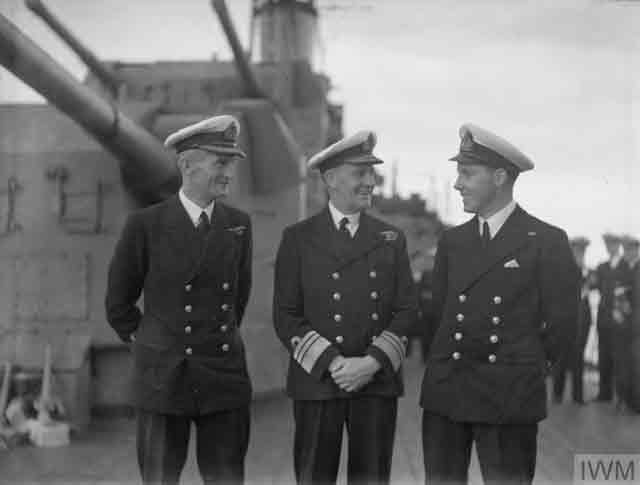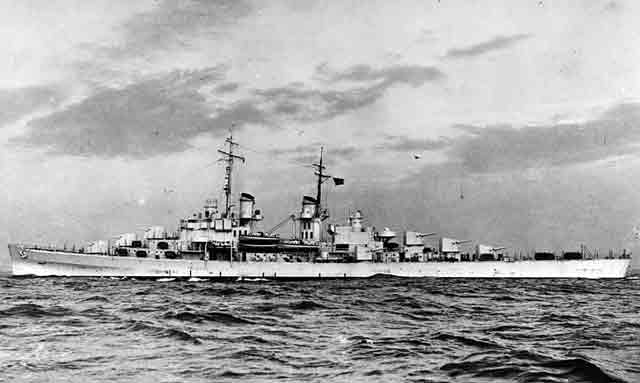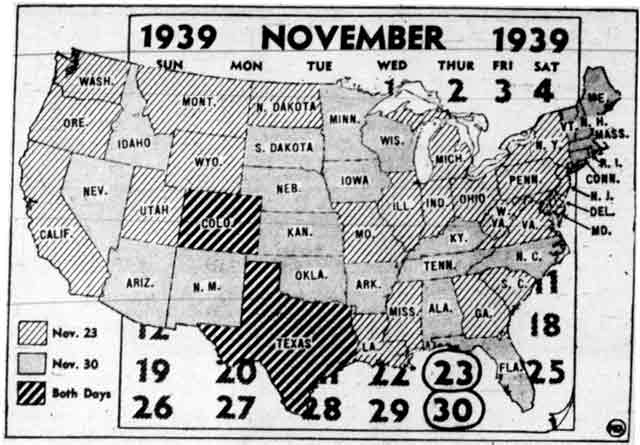Wednesday 26 November 1941
 |
| "Two soldiers holding up a swastika flag found in a captured German PzKpfw IV tank in the Western Desert, 26 November 1941." (Vanderson, William George, © IWM (E 6740)). |
Battle of the Pacific: The Japanese Carrier Striking Force or 1st Air Fleet, aka Kidō Butai, departs on
26 November 1941 from its assembly point at Tankan Bay, Iturup Island, South Kuril Islands for its first mission of the coming war. Its destination is a point to the north of Pearl Harbor, the site of the main United States Pacific Fleet. This force includes five aircraft carriers:
- Hiryu
- Kaga
- Shokaku
- Soryu
- Zuikaku
Accompanying the six fleet aircraft carriers are two battlecruisers (Hiei and Kirishima), three cruisers, nine destroyers, and three submarines. There also are eight tankers and supply ships. Separately, Vice Admiral Chuichi Nagumo aboard aircraft carrier
Akagi departs from Hitokappu Bay in the Kurile Islands. Light cruiser Naka departs from Terashima Strait at Sasebo, Japan. All three of these groups plan to rendezvous at sea and together carry out the "Hawaii Operation" at or about dawn at 7 December 1941 Hawaiian time and date.
 |
| "Pearl Harbor, Oahu, Territory of Hawaii: Vertical aerial photograph, taken from a U.S. Army plane at 1100 hrs., 26 November 1941. The Navy Yard is at the left, with the aircraft carrier USS Enterprise (CV-6) alongside 1010 Dock. Naval Air Station Pearl Harbor, on Ford Island, is in the upper center and right." (NH 96615 Pearl Harbor, Oahu, Territory of Hawaii, Naval History and Heritage Command). |
US/Japanese Relations: In Washington, D.C., Secretary of State Cordell Hull presents the latest draft of a proposed
modus vivendi agreement with Japan to prevent a war. The
modus vivendi proposal has been worked up by the State Department in conjunction with the War Council. It proposes minor Japanese concessions in French Indochina and a commitment to refrain from aggressive action in exchange for a resumption of limited trade with the United States. The proposal is to last for three months, which styles it as a virtual ceasefire even though there are no hostilities. President Roosevelt agrees with Hull that the
modus vivendi proposal smacks of appeasement and rejects it. Instead, Roosevelt instructs Hull to submit a 10-point reply to the latest Japanese peace offer, Proposal B, that contains no counterproposal and simply reiterates the standing United States demands. After his meeting with the President, Hull hands Ambassador Nomura this reply which effectively terminates negotiations between the two powers.
 |
| A captured German PzKpfw IV tank in North Africa. 26 November 1941 (cropped from © IWM (E 6734)) |
Spy Stuff: The United States military intelligence service begins to receive clues that the Japanese military is active. There are troop movements in French Indochina, for instance. Joseph Rochefort, a top cryptanalyst with the United States Navy's cryptographic and intelligence operations and the officer in charge of Station Hypo (for Hawaii), reports that the Japanese Fleet also is active. The assumption by US intelligence is that the Japanese are planning some type of action in the South Pacific. The Japanese, in fact, are planning quite a bit of action in the Pacific, and Japanese leaders are meeting today on Formosa to plan the conquest of the Philippines, but the US intelligence service does not see foresee anything imminent.
 |
| "A member of the Royal Tank Regiment acts an escort to prisoners being brought down from the forward areas in the Western Desert, 26 November 1941." © IWM (E 6743). |
Battle of the Mediterranean: British Operation Crusader, the attempt to relieve Tobruk, has degenerated into a wild melee with both sides attacking in different directions. The Afrika Korps panzers have advanced to the southeast of Tobruk, threatening the rear of the most advanced British positions, but their dramatic advance to the southeast has left them overextended. General Rommel today orders 21st Panzer Division at Bardia to turn northwest toward Tobruk while the 15th Panzer Division cleans out the border area between Fort Capuzzo and Sidi Omar. The panzers have outrun their supply lines, so General Walter Neumann-Silkow, commanding 15th Panzer Division, decides to take Sidi Aziz where he believes he can find a British supply dump. The Germans now have the initiative, but which side can best satisfy its logistical needs in this fluid battle is bound to be the ultimate victor. Meanwhile, outside Tobruk, members of the Tobruk garrison take the important Italian strong point at El Duda.
 |
| "Vice-Admiral Sir James Somerville (center) visits HMS HERMIONE to congratulate Captain G N Oliver (left) and Lieut J B Wainright (navigator) on their receiving the DSO. Both officers were decorated for sinking an Italian U-boat, by ramming." 26 November 1941 © IWM (A 6409). |
Eastern Front: A fierce battle for Istra, near the Volokolamsk/ Moscow highway, finally ends when the 10th Panzer Division pushes Manchurian troops from Khabarovsk out of the town. However, the Soviet troops pushed out of the town launch furious counterattacks in the -4 Degrees Fahrenheit weather which give the Germans no rest. The 2nd SS Division "Das Reich" advances to support this advanced position and blasts through the 78th Siberian Rifle Division to capture a fortress on the western outskirts of Istra, with two SS infantry regiments, "Deutschland" and "Der Fuehrer," advancing into the town from the south. While capturing this major strong point is a success, every advance by the Wehrmacht now requires a major effort from multiple directions that includes vicious street fighting. Elsewhere on the Moscow front, the Germans make few if any advances as the Wehrmacht regroups for one more major effort to take the Soviet capital.
 |
| "Sailors surround the ship's cat "Convoy" asleep in a miniature hammock onboard HMS HERMIONE, Gibraltar, 26 November 1941." © IWM (A 6410). |
British/Finnish Relations: Finland is not at war with anyone but the Soviet Union and it wants to keep it that way. However, both the United States and Great Britain have been threatening a "crisis" in diplomatic relations if Finnish land or troops are used to interdict Lend-Lease supplies to Russia along the Murmansk railway. This has caused Finland to discontinue all offensives which otherwise might be bearing fruit. Today, the British government issues a formal ultimatum to Finland to cease all offensive operations by 3 December 1941 or it will declare war.
 |
| USS Atlanta (CL-51) running trials off Rockland, Maine, 26 November 1941. Photograph from the Bureau of Ships Collection in the U.S. National Archives. |
American Homefront: Following years of confusion during which the different states of the United States celebrated Thanksgiving on different days, President Roosevelt tries to end the controversy by signing a joint resolution which establishes a fixed date every year for the federal holiday. This bill provides that Thanksgiving will be celebrated every year on the last Thursday in November. That makes tomorrow, 27 November 1941, the legal holiday of Thanksgiving for the entire country. This does not quite end the controversy completely, however, as future congressional action will change the date from the last Thursday of November to the fourth Thursday of November (some Novembers have five Thursdays).
 |
| A map of the United States (Hawaii and Alaska have yet to become states) showing the different days on which different states celebrated Thanksgiving in 1939. Some states celebrated "Franksgiving" on 23 November, others celebrated Thanksgiving on 30 November, and some states celebrated the holiday on both days. On 26 November 1941, President Roosevelt tries to end the dispute over the proper day to celebrate Thanksgiving, but it's not quite over yet. |
November 1941
November 1, 1941: Finns Attack Toward Murmansk Railway
November 2, 1941: Manstein Isolates Sevastopol
November 3, 1941: Japan Prepares to Attack
November 4, 1941: German Advances in the South
November 5, 1941: Last Peace Effort By Japan
November 6, 1941: Stalin Casts Blame in an Unexpected Direction
November 7, 1941: Stalin's Big Parade
November 8, 1941: Germans Take Tikhvin
November 9, 1941: Duisburg Convoy Destruction
November 10, 1941: Manstein Attacks Sevastopol
November 11, 1941: Finland's Double Game Erupts
November 12, 1941: T-34 Tanks Take Charge
November 13, 1941: German Orsha Conference
November 14, 1941: German Supply Network Breaking Down
November 15, 1941: Operation Typhoon Resumes
November 16, 1941: Manstein Captures Kerch
November 17, 1941: Finland Halts Operations
November 18, 1941: British Operation Crusader
November 19, 1941: Sydney vs. Kormoran Duel
November 20, 1941: The US Rejects Final Japanese Demand
November 21, 1941: Germans Take Rostov
November 22, 1941: Kleist in Trouble at Rostov
November 23, 1941: Germans Take Klin, Huge Battle in North Africa
November 24, 1941: Rommel Counterattacks
November 25, 1941: HMS Barham Sunk
November 26, 1941: Japanese Fleet Sails
November 27, 1941: British Relieve Tobruk
November 28, 1941: Rostov Evacuated, German Closest Approach to Moscow
November 29, 1941: Hitler Furious About Retreat
November 30, 1941: Japan Sets the Date for its Attack
2020








No comments:
Post a Comment